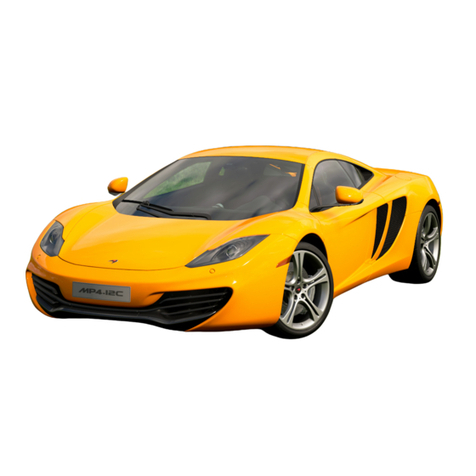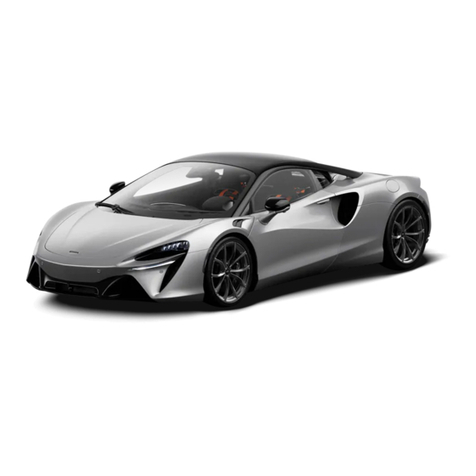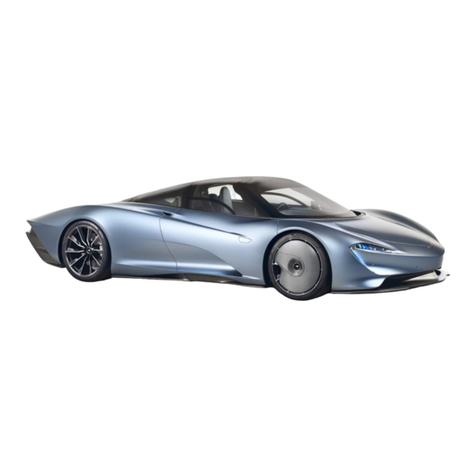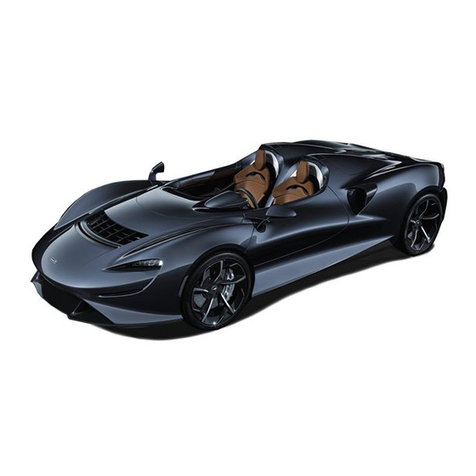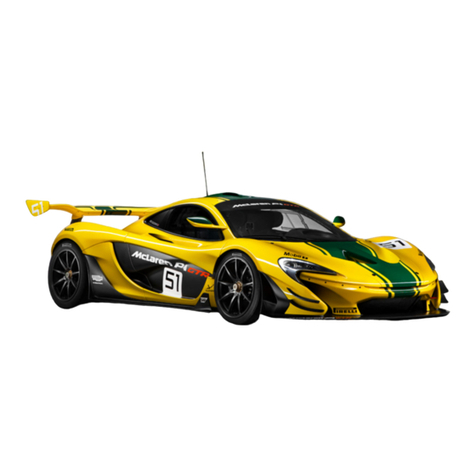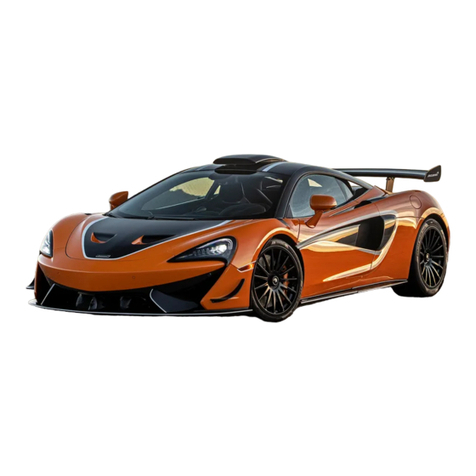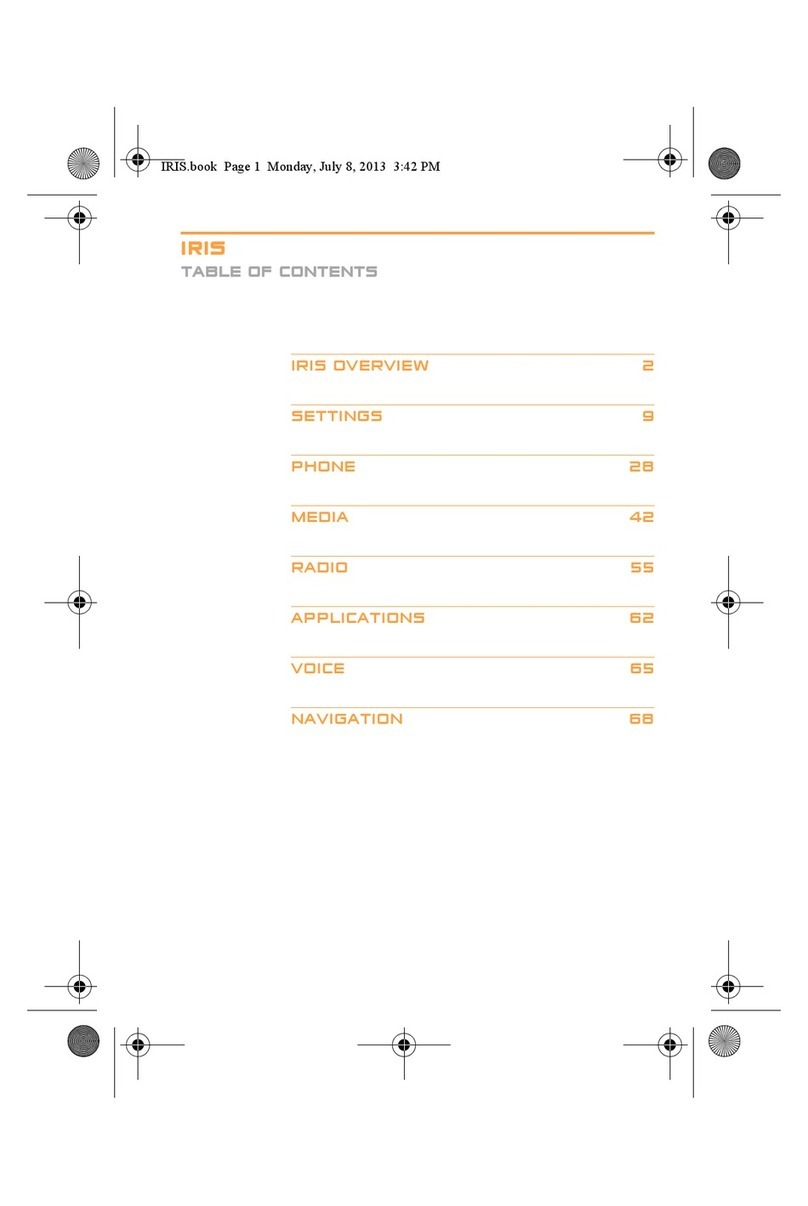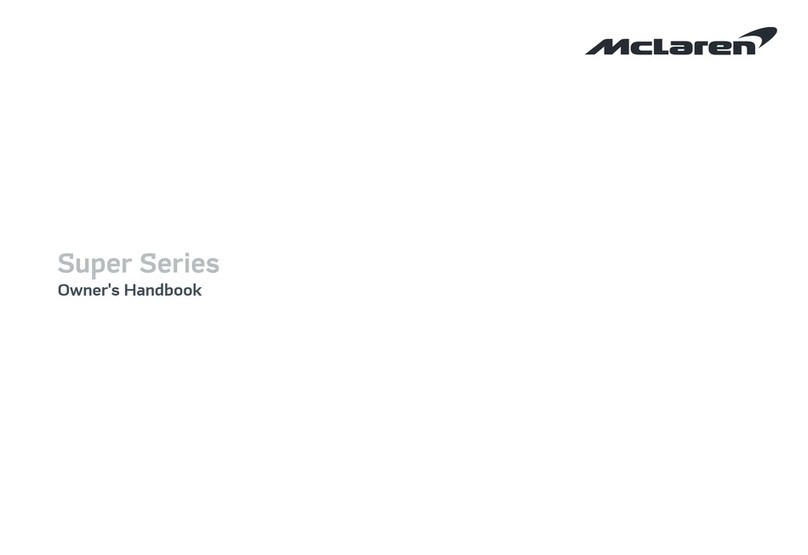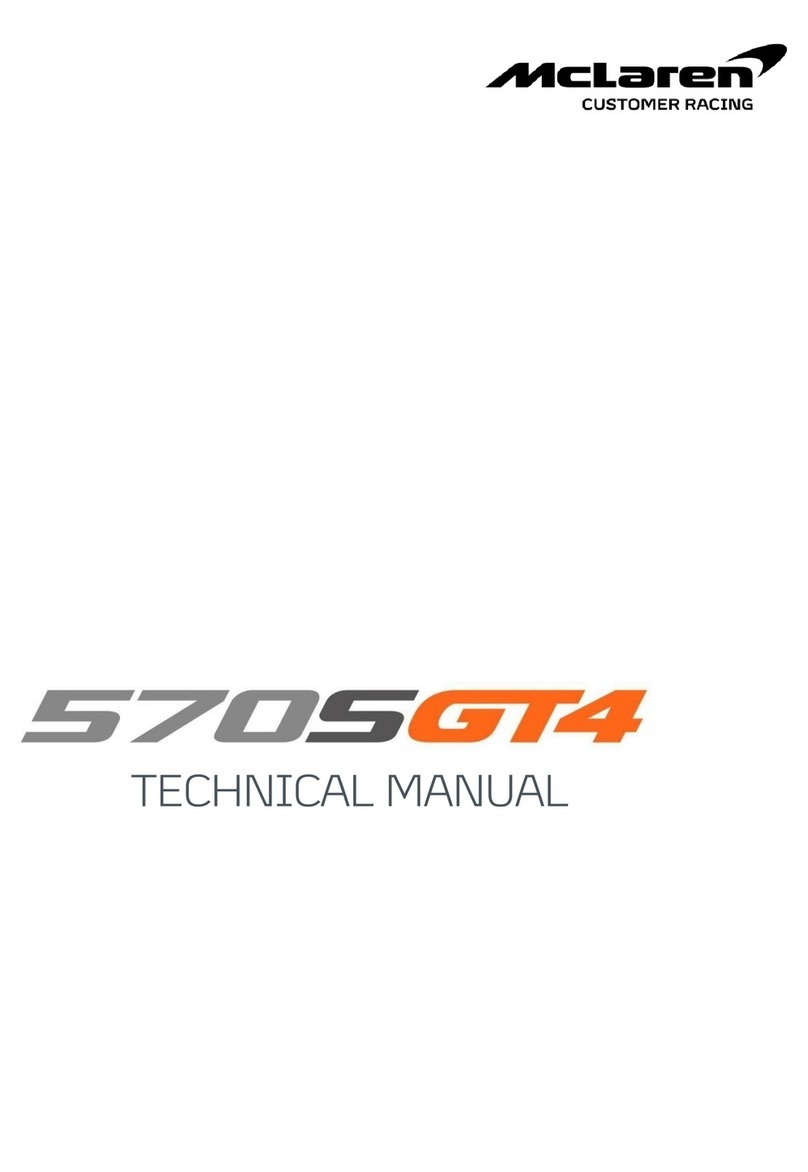INTRODUCTION
✁
✄
✂
■
✜
✢
✣
☎
✂
✁
✜
✄
Introduction
)
✍
✡
✟
✔
✡
✠
✡
✟
✤
✌
✑
✥
✔
✥
☛
✦
✒
✠
✧
✟
✌
✥
✒
☛
✌
✒
✦
✟
✧
✥
✍
✥
✟
✠
✥
★
✡
yourself with your McLaren and its features
before you drive. This provides the necessary
information for you to get the optimum
benefit and enjoyment from your McLaren.
This publication describes all options and
features available for the McLaren Sports
Series. Certain descriptions, including those
for display and menu functions, may not apply
to your vehicle due to model variant, country
specifications, optional equipment or the
fitment of McLaren approved accessories.
NOTE: The images shown in this
publication may not exactly reflect your
unique vehicle.
The documents supplied with your McLaren
are an integral part of the vehicle. Ensure that
you pass them onto the new owner if you sell
the vehicle.
The information is divided into specific
sections, to assist in finding the particular
information you require:
✩
✪
✫
✬
✭
✪
✮
✬
✯
✰
✭
✱
✲
✪
❉
✡
✌
✟
✥
✍
✔
✌
✑
✡
✔
✡
✌
✌
✥
☛
✳
✔
✴
✒
✓
☛
✡
✡
✤
✌
✒
✧
✟
✵
✡
✥
☛
✌
✑
✡
cockpit to ensure you are fully prepared and
have safe and easy access to all controls
before driving.
✶
✭
✱
✲
✱
✸
✹
✺
✬
✸
✻
✭
✬
✼
✽
❚
✑
✥
✔
✔
✡
✝
✌
✥
✒
☛
✝
✒
☛
✌
✟
✥
☛
✔
✤
✡
✌
✟
✥
✍
✡
✤
✥
☛
✦
✒
✠
✧
✟
✌
✥
✒
☛
regarding the equipment and driving controls
fitted to your McLaren and how to use those
controls to best effect during a journey.
✾
✸
✽
✻
✭
✯
✿
✪
✸
✻
✽
❚
✑
✥
✔
✔
✡
✝
✌
✥
✒
☛
✝
✒
☛
✌
✟
✥
☛
✔
✥
☛
✦
✒
✠
✧
✟
✌
✥
✒
☛
✒
☛
✌
✑
✡
instrument cluster, including information of
how to view and change vehicle settings.
✺
✬
✿
✫
✬
✭
✻
❈
✸
✰
✺
✬
✸
✲
✪
✸
✱
✪
✸
❀
✪
❁
✒
☛
✌
✟
✥
☛
✔
✥
☛
✦
✒
✠
✧
✟
✌
✥
✒
☛
✒
☛
✌
✑
✒
✔
✡
✔
✴
✔
✌
✡
✧
✔
✟
☛
✤
features which make the cockpit a pleasant
environment in which to spend time.
❂
❈
✱
✸
✻
❈
✱
✸
✱
✸
✹
✮
✬
✯
✭
❂
❀
❃
❈
✭
✪
✸
❄
☛
✦
✒
✠
✧
✟
✌
✥
✒
☛
✒
☛
✧
✟
✥
☛
✌
✟
✥
☛
✥
☛
✳
✴
✒
✓
✠
▼
✝
✞
✟
✠
✡
☛
✥
✔
here. Also included is advice on using your
McLaren in winter weather and if you choose
to drive your vehicle abroad, what to do if
something should go wrong and how to
manage any possible problems which arise as
a result. Information on fuses, lights and what
to do if you experience a puncture.
❱
✪
❅
✱
❀
✼
✪
✶
❈
✻
❈
❈
✸
✰
❊
✼
✬
✽
✽
❈
✭
✮
❘
✡
✦
✡
✠
✌
✒
✌
✑
✥
✔
✔
✡
✝
✌
✥
✒
☛
❋
✑
✡
☛
✴
✒
✓
☛
✡
✡
✤
information regarding the fluids and
quantities that are required for the various
systems on your McLaren, or when you need
to know a specific piece of data relating to
your McLaren or its performance.
The technical glossary contains a brief
explanation of some of the more complex
systems fitted to your McLaren. Your McLaren
Retailer will be able to assist should you need
more information.
✾
✸
✰
✪
●
❚
✑
✡
✌
✟
❍
✍
✡
✒
✦
✝
✒
☛
✌
✡
☛
✌
✔
✟
☛
✤
✌
✑
✡
✥
☛
✤
✡
❏
❋
✥
✍
✍
✑
✡
✍
❑
you find information quickly, when you need
it.
